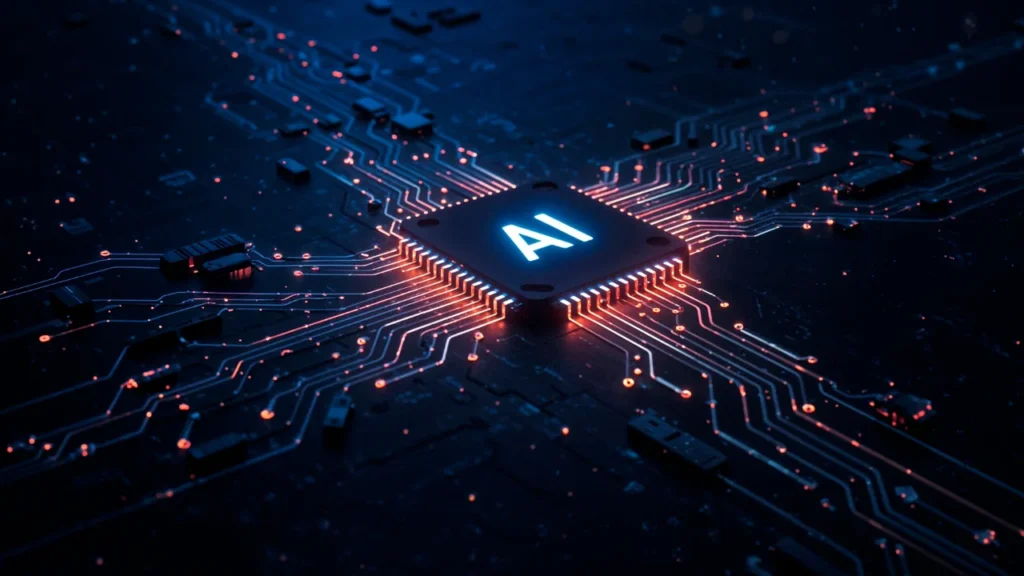In today’s fast-evolving industrial world, production efficiency and equipment reliability have become non-negotiable elements of competitiveness. Manufacturers are now moving beyond traditional scheduled servicing to embrace predictive maintenance AI, a digital approach where machines, sensors, and intelligent algorithms work together to prevent failures before they occur. This proactive strategy allows factories to optimize production cycles, avoid costly breakdowns, and dramatically cut operational interruptions.
As Industry 4.0 technologies continue to reshape modern manufacturing, predictive maintenance has emerged as one of the most valuable applications of artificial intelligence. By combining industrial sensors, cloud analytics, and machine learning, factories are now capable of identifying early warning signals that were previously undetectable. The result is significant downtime reduction, improved asset health, and smarter industrial operations.
Introduction to Predictive Maintenance and AI
Predictive maintenance refers to the use of real-time data, smart algorithms, and intelligent analysis to determine when machinery will likely fail. Unlike preventive strategies that follow a fixed schedule, predictive systems adjust maintenance needs according to actual machine behavior. When AI enters the equation, predictions become dramatically more accurate and powerful.
At its core, predictive maintenance AI enables factories to transition from reactive firefighting to strategic planning. With real-time monitoring and pattern recognition, manufacturers can detect anomalies, reduce inspection time, and prevent sudden equipment failures.
- Traditional maintenance: Reactive and schedule-based.
- Predictive maintenance AI: Data-driven, real-time, intelligent, and highly efficient.
How Predictive Maintenance AI Works
Role of Sensors in Data Collection
In a modern smart factory, predictive maintenance begins with a dense network of industrial sensors, each designed to observe specific aspects of machine health. These sensors act as the “eyes and ears” of the system—capturing continuous, real-time data that reflects what’s happening inside motors, bearings, pumps, turbines, compressors, conveyors, and other critical equipment.
This data is the raw material that fuels predictive maintenance AI. Without stable, accurate sensor inputs, even the most advanced algorithms would be ineffective.
Types of Industrial Sensors Used in Predictive Maintenance
To build a reliable predictive maintenance environment, factories typically deploy a combination of several sensor types, each contributing unique insights:
1. Vibration Sensors
Vibration is the earliest and most common indicator of mechanical failure.
These sensors measure:
-
Rotor imbalance
-
Misalignment
-
Bearing wear
-
Loosened components
Even minor vibration spikes can predict failures weeks before they become noticeable.
2. Temperature Sensors
Temperature changes often signal lubrication issues, friction, motor overload, or cooling system malfunction.
A rise of just a few degrees may indicate:
-
Bearing degradation
-
Overstressed motors
-
Fluid contamination
-
Failing electrical components
Thermal patterns become highly accurate when combined with historical temperature profiles.
3. Pressure Sensors
Used in hydraulic and pneumatic systems, these sensors track:
-
Fluid pressure stability
-
Pump efficiency
-
Air compression consistency
-
Valve integrity
Sudden pressure drops or spikes often precede system-wide failures.
4. Ultrasonic Sensors
These high-frequency sensors detect issues hidden beyond normal human hearing.
They identify:
-
Air and gas leaks
-
Internal friction
-
Cavitation
-
Micro-cracks inside components
Ultrasonic signatures often reveal problems before vibration or temperature changes appear.
The Role of IoT and Data Infrastructure
Data from all sensors is transmitted through industrial IoT networks into a centralized data platform—either cloud-based or on-premise. This infrastructure ensures:
-
High-speed data transfer
-
Low-latency monitoring
-
Unified data storage
-
Secure communication
The more extensive and reliable the data stream, the more powerful the predictive maintenance AI becomes. Large datasets allow algorithms to learn patterns that the human eye could never detect.
Machine Learning and Failure Prediction

Once sensor data reaches the analytics layer, machine learning takes over. Predictive maintenance AI does not rely on simple thresholds or alarms—it recognizes patterns, trends, and micro-anomalies that develop over time.
How the AI Learns
The system is trained using:
-
Historical failure data
-
Normal operational baselines
-
Sensor trend archives
-
Real-time equipment readings
It compares new data against what it has learned from the past, constantly updating its understanding as machines age, conditions change, and performance characteristics evolve.
Key AI Tasks in Predictive Maintenance
Predictive maintenance AI performs several core analytical functions:
1. Anomaly Detection
The system monitors subtle changes in sensor data that deviate from established norms. Instead of waiting for a breakdown, it alerts operators the moment equipment behavior becomes unusual.
Examples:
-
Slight increases in motor vibration
-
Unusual thermal spikes during start-up
-
Irregular pressure fluctuations under load
Anomalies are often early warnings of future failures.
2. Failure Prediction
Using advanced forecasting models, the AI estimates:
-
What component is likely to fail
-
How severe the issue is
-
How soon failure will occur
This predictive foresight lets factories schedule maintenance before the breakdown ever happens.
3. Maintenance Optimization
The AI recommends the ideal maintenance window by balancing:
-
Production schedules
-
Equipment workload
-
Inventory availability
-
Technician capacity
This ensures maintenance is neither too early nor too late—maximizing uptime and minimizing repair costs.
Why This AI-Driven Approach Is More Accurate
Traditional inspection methods rely on human observation, periodic checks, or fixed maintenance schedules. Predictive maintenance AI, on the other hand:
-
Monitors every second of machine operation
-
Detects issues far below human perception
-
Learns continuously from every new data point
-
Builds accurate models personalized for each machine
-
Reacts instantly to sudden changes in behavior
This makes it significantly more effective at preventing failures, reducing downtime, and improving equipment lifespan.
What This Means for Smart Factories
By combining powerful sensors, robust IoT networks, and advanced machine learning, predictive maintenance AI creates a fully connected ecosystem where machines and algorithms work together seamlessly. Factories gain:
-
Higher operational stability
-
Faster maintenance response
-
Lower overall maintenance costs
-
Better planning and scheduling
-
Longer equipment life
-
Major downtime reduction
It’s not just a tool—it’s a strategic advantage that keeps factories running at peak performance.
Key Benefits of Predictive Maintenance AI
Downtime Reduction and Higher Reliability
Unplanned downtime can cost factories thousands of dollars per hour. With predictive maintenance AI, companies can detect early signs of malfunction, enabling them to intervene before equipment fails.
Benefits include:
- 70–90% reduction in unexpected breakdowns
- Lower maintenance costs through early intervention
- Enhanced production stability and workflow efficiency
This level of downtime reduction is especially valuable in high-volume manufacturing environments where every minute of stoppage impacts revenue.
Cost Efficiency and Resource Optimization
Predictive maintenance helps factories focus their resources where they matter the most. Instead of routine manual inspections, AI provides targeted and accurate maintenance alerts.
Cost benefits include:
- Reduced spare parts consumption
- Extended machinery lifespan
- Lower labor costs due to fewer emergency repairs
Improved Safety and Risk Management
When machines run with unidentified faults, safety risks increase. Predictive AI reduces such risks by identifying early failure signs, enabling factories to maintain safe conditions for workers.
High-Value Applications Across Industries
Smart Factories and Industrial Automation
The manufacturing sector benefits the most from predictive maintenance AI. CNC machines, robotics, conveyors, and automated lines depend on consistent performance. AI-backed systems eliminate guesswork and ensure near-continuous operation.
Applications include:
- Detecting rotor imbalance on assembly line motors
- Predicting spindle wear in CNC equipment
- Monitoring lubrication levels and thermal behavior
Energy, Utilities, and Heavy Industry
Power plants, oil and gas facilities, and heavy industrial systems rely on turbines, compressors, and pumps. Predictive maintenance AI helps detect failures that can lead to major downtime or safety issues.
Examples:
- Predicting transformer overheating
- Monitoring pipeline pressure fluctuations
- Identifying turbine blade defects
Automotive, Aerospace, and Logistics
High-stress, precision-driven industries use predictive maintenance AI to anticipate equipment failure and maintain full operational integrity.
Applications include:
- Monitoring aircraft engine vibration
- Predicting vehicle component fatigue
- Ensuring conveyor belt performance in logistics hubs
Building a Successful Predictive Maintenance System
Data Infrastructure and Sensor Strategy
Predictive maintenance AI is only as strong as the data feeding it. Factories should invest in reliable, high-quality sensors that collect the right parameters for analysis.
| Sensor Type | Function | Common Use |
|---|---|---|
| Vibration Sensor | Detect mechanical imbalance | Motors, CNC spindles |
| Thermal Sensor | Monitor temperature variations | Bearings, compressors |
| Ultrasonic Sensor | Detect friction and leaks | Pipelines, air compressors |
These sensors form the backbone of any predictive system and must be integrated into a unified factory network.
AI Model Training and Continuous Optimization
After data is collected, AI models must be trained to understand what normal and abnormal equipment behavior looks like. A well-developed predictive maintenance AI system continuously evolves as more data is gathered, making the predictions increasingly accurate.
Key components of AI model optimization include:
- Data labeling: Identifying failure signatures and historical patterns.
- Trend analysis: Recognizing shifts in vibration, temperature, or pressure values.
- Continuous model retraining: Updating predictions based on new machine behavior.
The more real-world information the system receives, the faster and more reliable its predictions become—resulting in consistent downtime reduction across the factory floor.
Integration With Factory Management Systems
One of the strongest advantages of predictive maintenance AI is its ability to integrate with existing industrial software platforms such as MES (Manufacturing Execution Systems), ERP (Enterprise Resource Planning), and SCADA systems. These integrations allow factories to centralize all maintenance, production, and operational data into a single dashboard.
This creates a unified environment where:
- Machine status updates appear in real time
- Maintenance alerts are automatically scheduled
- Spare parts and inventory planning are optimized
- Technicians receive automated instructions to reduce manual guesswork
With the right integration, predictive maintenance AI becomes a fundamental part of a fully connected, smart manufacturing ecosystem.
Challenges and Limitations
While predictive maintenance is extremely powerful, it is not without challenges. Implementation requires investment, training, and a strong commitment to digital transformation.
Data Quality and Sensor Accuracy
Sensor accuracy plays a crucial role in determining how reliable the predictive maintenance system will be. Low-quality or improperly calibrated sensors can produce noisy data, leading to inaccurate predictions.
Major challenges include:
- Sensor drift and calibration issues
- Incomplete or missing data sets
- Environmental interference affecting readings
To ensure optimal performance, factories must regularly maintain and validate their sensor network.
Workforce Adaptation and Skills Development
As factories adopt predictive maintenance AI, the workforce must learn how to interpret dashboards, respond to alerts, and maintain IoT devices. This shift requires training and change management.
- Technicians need digital literacy
- Maintenance teams must adjust workflows
- Managers must learn AI-based decision-making
Although the transition may take time, the long-term benefits far outweigh the challenges.
Implementation Costs and Cybersecurity
Deploying predictive maintenance AI involves initial investments in sensors, network infrastructure, and AI platforms. Additionally, factories must protect their data and ensure cybersecurity against industrial threats.
Key cybersecurity considerations include:
- Securing IoT networks from external attacks
- Encrypting real-time machine data
- Implementing strict access controls
These steps help ensure the predictive maintenance environment remains safe and reliable.
The Future of Predictive Maintenance AI
The future of industrial maintenance is fully autonomous. Machines will not only detect their own issues but also self-diagnose, predict failure timelines, and schedule repairs automatically. Factories will become more efficient, stable, and adaptive to real-time demands.
Emerging trends include:
- Self-correcting machines: Equipment automatically adjusts parameters to avoid failure.
- Next-generation sensors: More accurate, energy-efficient, and wireless monitoring units.
- AI-powered decision engines: Real-time analytics guiding factory operations.
- Digital twins: Virtual factory replicas that simulate future failures and performance.
As more factories worldwide adopt predictive maintenance AI, efficiency gains and downtime reduction will become industry benchmarks rather than rare achievements.
Real-World Value: Why Predictive Maintenance AI Matters
Predictive maintenance is no longer a luxury—it is a necessity. With increasing automation, tighter production deadlines, and higher quality expectations, factories must minimize disruptions. AI-driven predictive maintenance provides a vital competitive advantage, enabling manufacturers to optimize operations, reduce breakdowns, and protect their most valuable assets.
For further reading on the evolution of predictive technologies, manufacturers can explore resources like Predictive Maintenance on Wikipedia.
Conclusion
The era of predictive maintenance AI has officially begun, reshaping factories around the world. By combining machine learning, industrial sensors, cloud systems, and automated intelligence, manufacturers can unlock unprecedented levels of reliability and efficiency.
From real-time monitoring to failure prediction and automated maintenance scheduling, predictive maintenance stands as a cornerstone of Industry 4.0. The benefits are clear: smarter operations, lower costs, and dramatically reduced downtime. As these technologies continue to evolve, they will become essential tools for achieving long-term industrial excellence.
Factories that embrace predictive maintenance AI now will position themselves as leaders in a highly competitive, data-driven future.



